
The Spain You Haven’t Met Yet
When most travelers picture Spain, they imagine the bustling streets of Barcelona, the flamenco rhythms of Seville, or Madrid’s art-filled museums. But beyond these famous cities lies another Spain — quieter, older, and heartbreakingly beautiful. On a road trip through northern Spain, I once stumbled upon a village so silent that even the church bells seemed shy. No souvenir stalls, no selfie sticks — just cobbled lanes, fresh mountain air, and a grandmother watering her geraniums. That’s when I realized: the real magic of Spain often hides in plain sight. This guide takes you to Spain hidden gems — the secret beaches, sleepy towns, and forgotten corners where tradition still beats strong and time slows to a whisper.
1. Albarracín – The Pink Stone Village of Aragon

Perched on a rugged hill in Teruel, Albarracín looks like something out of a fairytale. Its terracotta houses cling to the cliffs, overlooking the Guadalaviar River below. Wandering its medieval streets feels like walking through an old painting — every turn reveals stone archways, ancient walls, and sweeping mountain views.
The town remains largely untouched by modern tourism, and that’s its greatest charm. Visit in the early morning when the pink hues of the walls glow under the rising sun.
Don’t miss: Climbing to the old fortress for panoramic views of the valley.
2. Cudillero – The Secret Seaside Gem of Asturias
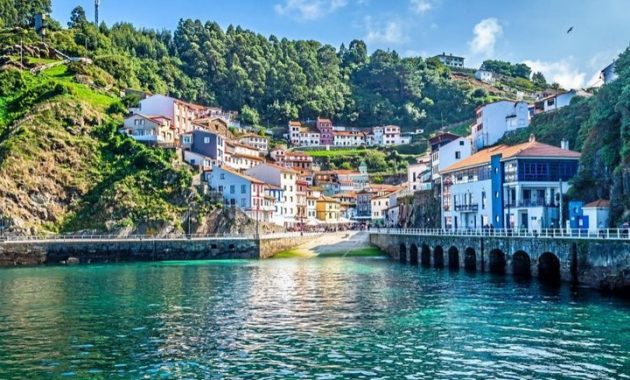
Imagine a fishing village painted in a thousand colors, each house stacked above the other like puzzle pieces. That’s Cudillero, a hidden coastal jewel on Spain’s northern coast.
Locals say the houses were built so fishermen could see their boats from home — and the result is stunning. Wander down narrow lanes to find family-run taverns serving fresh cider and grilled sardines.
Insider tip: Come in the evening to watch the sunset light up the pastel buildings — it’s pure magic.
3. Frigiliana – Andalusia’s Whitewashed Wonder

Nestled in the hills above Nerja, Frigiliana is one of the prettiest white villages (pueblos blancos) in Spain. Its cobblestone streets twist like ribbons, lined with pots of bougainvillea and hand-painted tiles telling Moorish legends.
While nearby Nerja draws crowds, Frigiliana remains peaceful — a place where you can sip sangria with locals and watch the sea shimmer in the distance.
Don’t miss: The annual Festival of Three Cultures in August, a colorful celebration of Moorish, Christian, and Jewish heritage.
4. Calella de Palafrugell – A Hidden Beach Escape on the Costa Brava
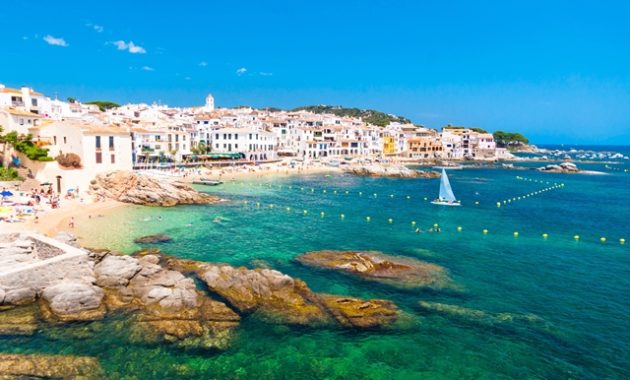
Tired of crowded beaches? Calella de Palafrugell offers everything you dream of in a Mediterranean seaside town — turquoise waters, stone cottages, and quiet coves framed by pine trees.
Locals still fish here, and you can hear the soft clinking of boats as the sun sets. It’s a perfect stop for those who want the beauty of the Costa Brava without the chaos.
Try this: Order a plate of suquet de peix (Catalan fish stew) by the sea — it’s comfort in a bowl.
5. Ronda – The Town on the Edge of a Gorge

Though not entirely unknown, Ronda often gets overshadowed by Seville and Granada. Yet, few places in Spain can match its drama — the town sits split by a deep canyon, connected by the magnificent Puente Nuevo bridge.
At sunrise, mist rises from the gorge like a dream, and at sunset, the bridge glows gold. Wander through Ronda’s old Moorish quarter, and you’ll find quiet courtyards, ancient walls, and wine cellars that feel centuries old.
Don’t miss: The Arab Baths and the old bullring, one of Spain’s oldest.
6. Setenil de las Bodegas – The Village Built Into Rocks
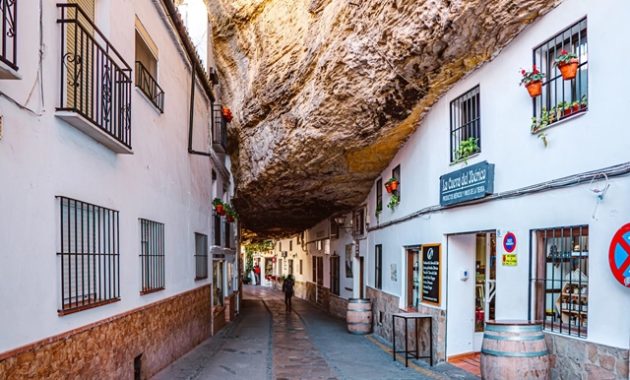
You’ve probably never seen a village quite like Setenil de las Bodegas. Here, houses are literally carved into massive cliffs — the rock overhangs shade the streets, keeping them cool in the Andalusian heat.
Walking through Calle Cuevas del Sol feels like exploring a natural wonder. Locals sit outside their cave-homes, sipping coffee, chatting, and watching the world go by.
Insider tip: Visit early morning for the best photos before the day-trippers arrive.
7. Las Médulas – Spain’s Ancient Gold Mines

In the hills of León lies a landscape that looks like Mars — burnt-orange cliffs, carved centuries ago by the Romans in their quest for gold. Today, Las Médulas is a UNESCO World Heritage Site and one of Spain’s most surreal hidden gems.
Hike through chestnut forests and tunnels carved by ancient miners. The viewpoints at Orellán offer jaw-dropping panoramas, especially at sunset.
Best time to visit: Autumn, when the foliage turns fiery red and gold.
8. Cadaqués – Dalí’s Coastal Muse
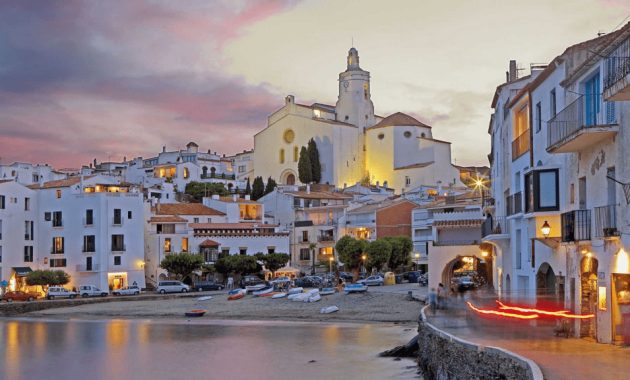
In Catalonia’s far northeast corner lies Cadaqués, a seaside town once loved by Salvador Dalí, Picasso, and Miró. It’s small, charming, and artistic — with whitewashed houses, blue shutters, and a calm bay that mirrors the sky.
Dalí’s house in nearby Portlligat is now a museum, frozen in time like a surrealist painting. Walking through the town, you might feel a creative spark of your own.
Don’t miss: The Cap de Creus natural park for hiking and hidden swimming coves.
9. Alpujarras – The Mountain Villages of Granada

High in the Sierra Nevada mountains, the Alpujarras region feels like another world. Tiny villages cling to the hillsides, their white houses stacked against a backdrop of green valleys and snow-capped peaks.
It’s perfect for slow travel — hiking between villages, tasting local cheeses, and chatting with artisans who weave traditional rugs.
Top villages: Pampaneira, Bubión, and Capileira — all equally enchanting.
10. Formentera – Ibiza’s Quiet Sister Island
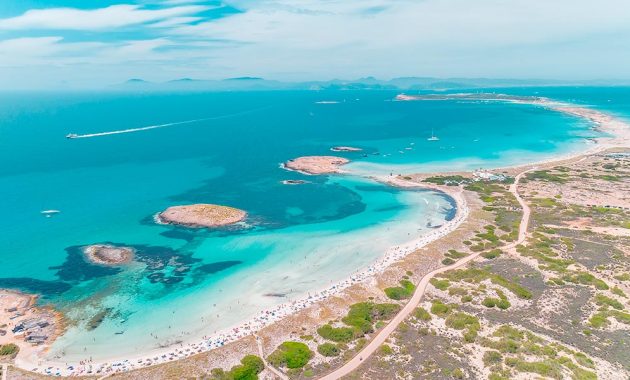
While Ibiza dances through the night, Formentera sleeps under a blanket of stars. This small island is pure serenity — crystal-clear waters, powdery beaches, and a pace so slow it feels timeless.
Rent a bike, follow the coastal paths, and stop wherever your heart tells you. It’s one of the most peaceful Spain hidden gems — ideal for those seeking simplicity and sea breeze.
FAQs About Spain Hidden Gems
Are these Spain’s hidden gems easy to reach by public transport?
Some are accessible by train or bus, but renting a car offers the most freedom.
When is the best time to visit Spain’s hidden gems?
Spring and autumn — mild weather, fewer tourists, and perfect light for photography.
Which hidden gem is best for beach lovers?
Calella de Palafrugell or Formentera — both offer stunning, quiet beaches.
Are small towns in Spain tourist-friendly?
Yes, locals are welcoming, and even basic Spanish phrases go a long way.
What are some budget-friendly Spain hidden gems?
Setenil de las Bodegas and Albarracín are charming and affordable.
Do I need to know Spanish to visit rural areas?
Not necessarily, but learning a few phrases helps you connect with locals.
Which region in Spain has the most hidden gems?
Andalusia and northern Spain (Asturias and Galicia) are full of surprises.
Is it safe to travel to these offbeat destinations in Spain?
Absolutely — Spain is very safe, even in remote areas.
Are there good hiking trails near these places?
Yes — especially around Las Médulas and the Alpujarras.
Can I visit multiple Spain’s hidden gems in one trip?
Yes, plan a road trip through southern Spain to cover several.
What’s the best Spain hidden gem for photographers?
Cadaqués and Ronda offer breathtaking photo opportunities.
How long should I spend exploring offbeat Spain?
At least a week — enough to breathe, wander, and truly experience it.
Final Verdict: Discover the Soul of Spain Beyond the Map
The Spain most travelers see is dazzling — but the one few discover is unforgettable.
Whether you’re sipping cider in Cudillero, hiking through Las Médulas, or getting lost in Albarracín’s pink alleyways, these Spain hidden gems whisper stories that no guidebook can fully tell.
So slow down, take the scenic route, and let curiosity lead the way. Because sometimes, the best parts of Spain are the ones you never planned to find.